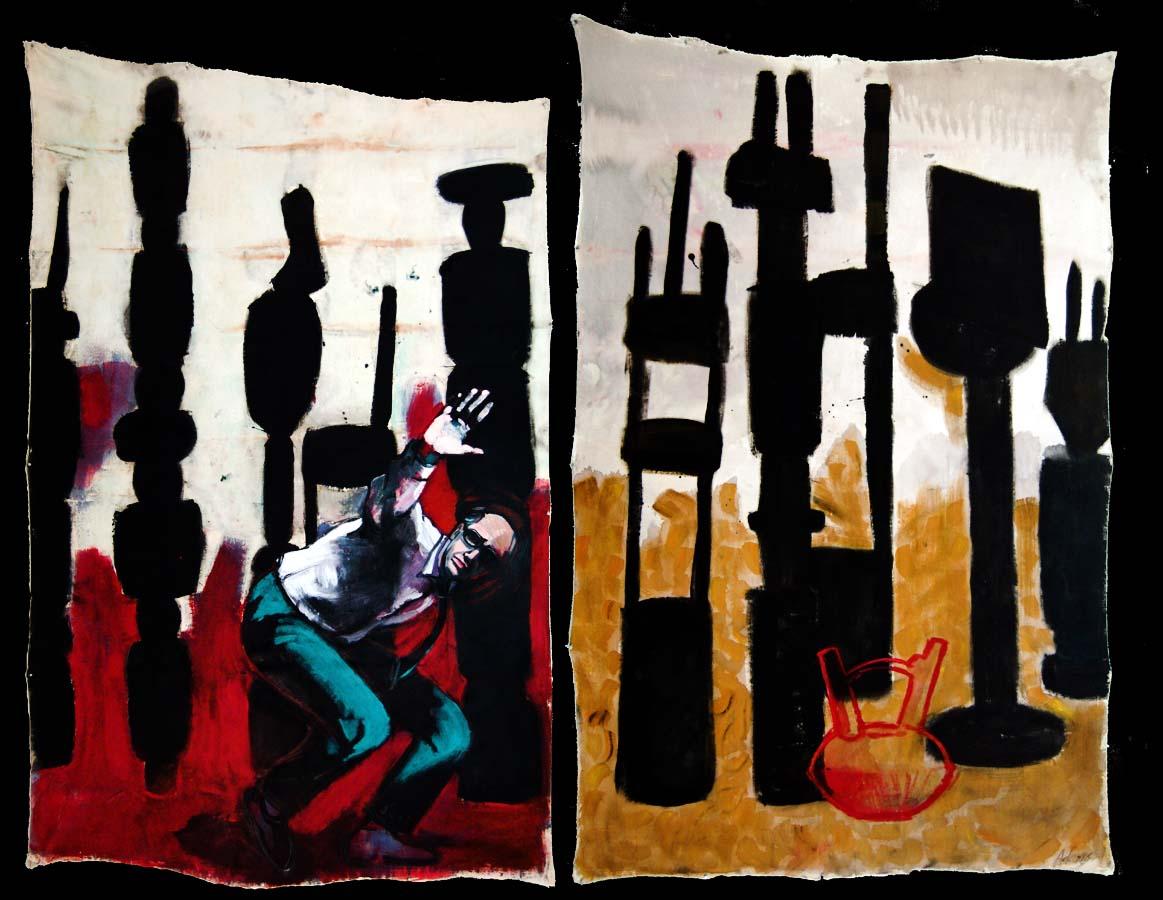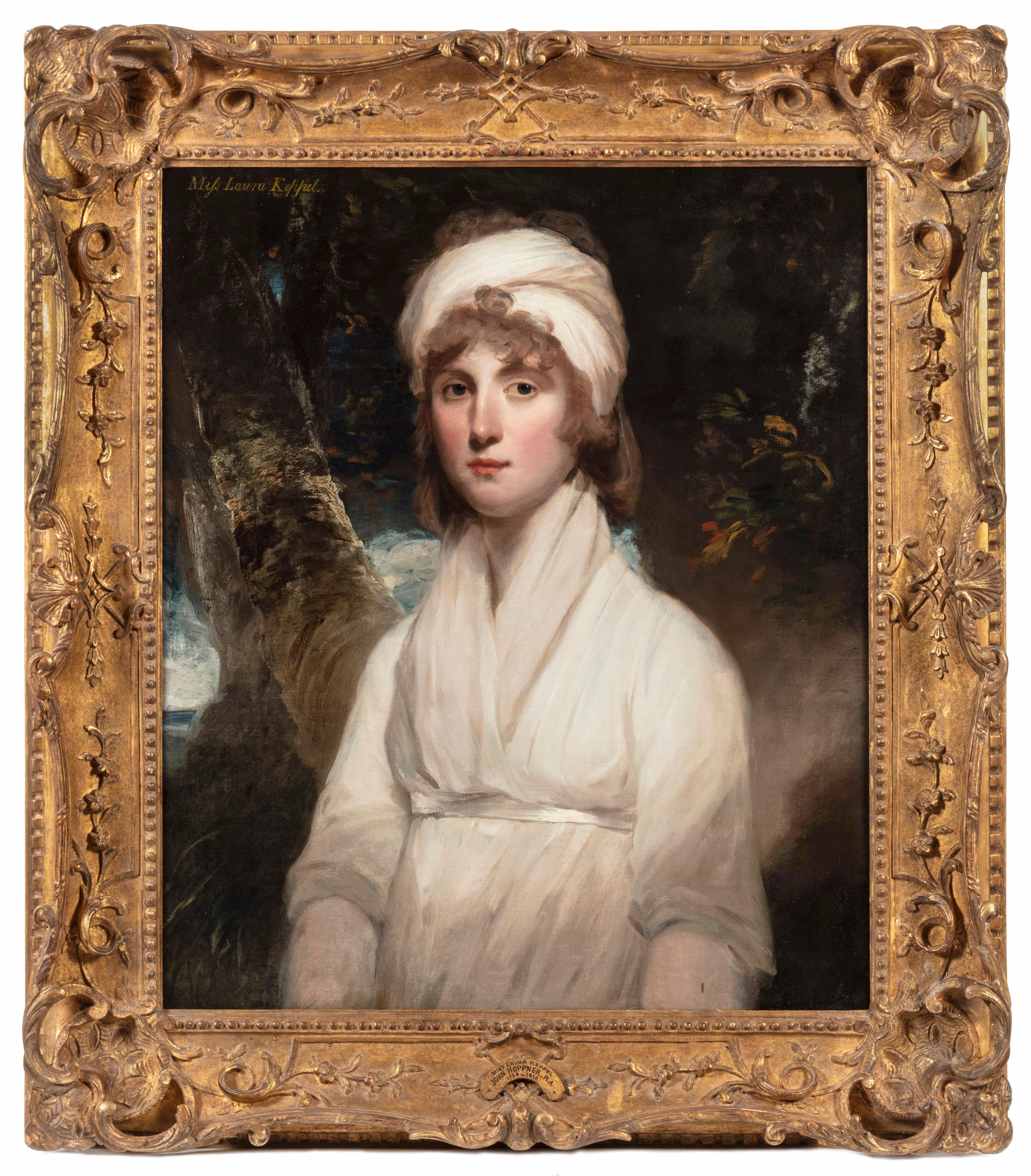Items Similar to A Cornish Man - Newlyn School Antique Impressionist Portrait Oil Painting
Want more images or videos?
Request additional images or videos from the seller
1 of 12
19th Century Newlyn SchoolA Cornish Man - Newlyn School Antique Impressionist Portrait Oil Paintingc.1890
c.1890
About the Item
A fine late 19th century Newlyn School oil on canvas portrait of a Cornish man. Fine quality portrait of the elderly working man seated in a chair wearing dark clothing and a red scarf, with a beautiful dappled light falling on his face.
Very close in style and quality to the work of the Newlyn School pioneers Edwin Harris and Stanhope Alexander Forbes.
James Lanham, St. Ives, Cornwall stamp on the reverse of the canvas - this popular Cornish artist's supplier made weekly trips to the artist colony at Newlyn.
Artist: Newlyn School, 19th century
Title: Portrait of a Cornish Man
Medium: Oil on canvas
Size: 24 x 20 inches (61 x 51 cm)
Small patch repair verso
The Newlyn School was an art colony of artists based in or near Newlyn, a fishing village adjacent to Penzance, on the south coast of Cornwall, from the 1880s until the early twentieth century. The establishment of the Newlyn School was reminiscent of the Barbizon School in France, where artists fled Paris to paint in a more pure setting emphasising natural light. These schools along with a related California movement were also known as En plein air.
Some of the first British artists to settle in the area had already travelled in Brittany, but found in Newlyn a comparable English environment with a number of things guaranteed to attract them: fantastic light, cheap living, and the availability of inexpensive models.
The artists were fascinated by the fishermen's working life at sea and the everyday life in the harbour and nearby villages. Some paintings showed the hazards and tragedy of the community's life, such as women anxiously looking out to sea as the boats go out, or a young woman crying on hearing news of a disaster.
Walter Langley is generally recognised as the pioneer of the Newlyn art colony and Stanhope Forbes, who settled there in 1884, as the father of it. The later Forbes School of Painting, founded by Forbes and his wife Elizabeth in 1899, promoted the study of figure painting.
- Creator:19th Century Newlyn School
- Creation Year:c.1890
- Dimensions:Height: 24.02 in (61 cm)Width: 20.08 in (51 cm)
- Medium:
- Period:
- Framing:Framing Options Available
- Condition:
- Gallery Location:Sevenoaks, GB
- Reference Number:1stDibs: LU1955211283882
About the Seller
5.0
Platinum Seller
These expertly vetted sellers are 1stDibs' most experienced sellers and are rated highest by our customers.
Established in 2016
1stDibs seller since 2022
65 sales on 1stDibs
Typical response time: <1 hour
- ShippingRetrieving quote...Ships From: Sevenoaks, United Kingdom
- Return PolicyA return for this item may be initiated within 3 days of delivery.
More From This SellerView All
- Young Men in an Interior - English Post Impressionist Pointillist Oil PaintingLocated in Sevenoaks, GBA beautiful c.1930 English post-impressionist / pointillist oil on canvas depicting two young men at a table. The work is superbly executed with a wonderf...Category
1930s Post-Impressionist Portrait Paintings
MaterialsCanvas, Oil
- Portrait of a Lady - English Art Deco Impressionist Antique Oil Sketch PaintingLocated in Sevenoaks, GBA beautiful 1930's English Art Deco oil on canvas portrait of a young lady wearing an evening dress and a stunning pair of earrings. An intriguing and unusual sketch like impression...Category
Early 20th Century Post-Impressionist Portrait Paintings
MaterialsCanvas, Oil
- Myself as a Big Boss in New York - Large Figurative Portrait Oil PaintingLocated in Sevenoaks, GBFine large 20th century oil on canvas self portrait of the artist as a Big Boss in New York. Inscribed twice with title on the reverse. Excellent quality work by an unknown artist. P...Category
20th Century Modern Figurative Paintings
MaterialsCanvas, Oil
- Portrait of a Man - Large Early 20th Century French Naif Oil on Canvas PaintingLocated in Sevenoaks, GBA charming early 20th century french naif oil on canvas portrait of a man wearing a traditional workers jacket and neckerchief. Beautiful and early example of 20th century French nai...Category
Early 20th Century Portrait Paintings
MaterialsOil, Canvas
- Portrait of a Lady - Large South Eastern European Oil on Canvas PaintingLocated in Sevenoaks, GBA beautiful mid 20th century Southeastern European oil on canvas portrait of a lady wearing a white headdress. This intriguing work is expertly painted with thick impasto paintwork which has been built up across the surface. Indistinctly signed lower right and presented in a reverse profile frame. We think that this work was painted by an artist working in Southeastern Europe, most likely Greece or Macedonia. Artist: Southeastern European School...Category
1960s Portrait Paintings
MaterialsCanvas, Oil
- Portrait of a Lady - Modern British Impressionist Oil on Canvas PaintingLocated in Sevenoaks, GBA superb 1930's Modern British oil on canvas portrait of a seated lady wearing a red shirt. The work is very beautiful and whilst unsigned is quite clearly by an artist of very high ...Category
Early 20th Century Impressionist Portrait Paintings
MaterialsCanvas, Oil
You May Also Like
- Island of Broken Toys (diptych)Located in Burlingame, CA'Island of Broken Toys' 2019, a diptych contemporary oil on canvas painting by Tamera Avery, whose paintings are created with wit and wisdom. Avery's work...Category
21st Century and Contemporary Contemporary Portrait Paintings
MaterialsCotton Canvas, Oil
- Oil Painting / Photorealism / Figurative Art / Human Figure /MuseumBy Bruce AdamsLocated in Buffalo, NYBruce Adams was a painter, art educator, and writer. Born in Buffalo, N.Y., in 1952, he received a B.S. in 1976 and an M.A. in 1983 from Buffalo State College. Adams’s work is includ...Category
1980s Contemporary Figurative Paintings
MaterialsCanvas, Oil
- Madonna and Child with Angels in the CloudsLocated in New York, NYProvenance: Charles H. and Virginia Baldwin, Claremont, Colorado Springs, Colorado ca. 1907-1934; thence by descent until sold in 1949 to: Charles Blevins Davis, Claremont (renamed Trianon), Colorado Springs 1949 -until gifted in 1952 to: The Poor Sisters of Saint Francis, Trianon, Colorado Springs, 1952 until acquired, 1960, by: John W. Metzger, Trianon, renamed as the Trianon School of Fine Arts, Colorado Springs, 1960-1967; when transferred to: The Metzger Family Foundation, Trianon Art Museum, Denver, 1967 - 2004; thence by descent in the Metzger Family until 2015 Exhibited: Trianon Art Museum, Denver (until 2004) The present work is a spectacular jewel-like canvas by Amigoni, rich in delicate pastel colors, most likely a modello for an altarpiece either lost or never painted. In it the Madonna stands firmly upon a cloud in the heavens, her Child resting on a delicate veil further supported by a cloud, as he gently wraps his arm around his mother’s neck. From above angels prepare to lower flowers and a wreath, while other angels and seraphim surrounding the two joyfully cavort. Dr. Annalisa Scarpa, author of the forthcoming monograph on Jacopo Amigoni...Category
18th Century and Earlier Figurative Paintings
MaterialsCanvas, Oil
- Portrait of Laura Keppel, later Lady SouthamptonBy Sir John HoppnerLocated in New York, NYInscribed, upper left: “Miss Laura Keppel” Provenance: Commissioned from the artist and by descent in the Keppel family estate, Lexham Hall, Norfolk, to: Major Bertram William Arnol...Category
18th Century Paintings
MaterialsCanvas, Oil
- Portrait of a Lady with a ChiqueadorLocated in New York, NYProvenance: Torres Family Collection, Asunción, Paraguay, ca. 1967-2017 While the genre of portraiture flourished in the New World, very few examples of early Spanish colonial portraits have survived to the present day. This remarkable painting is a rare example of female portraiture, depicting a member of the highest echelons of society in Cuzco during the last quarter of the 17th century. Its most distinctive feature is the false beauty mark (called a chiqueador) that the sitter wears on her left temple. Chiqueadores served both a cosmetic and medicinal function. In addition to beautifying their wearers, these silk or velvet pouches often contained medicinal herbs thought to cure headaches. This painting depicts an unidentified lady from the Creole elite in Cuzco. Her formal posture and black costume are both typical of the established conventions of period portraiture and in line with the severe fashion of the Spanish court under the reign of Charles II, which remained current until the 18th century. She is shown in three-quarter profile, her long braids tied with soft pink bows and decorated with quatrefoil flowers, likely made of silver. Her facial features are idealized and rendered with great subtly, particularly in the rosy cheeks. While this portrait lacks the conventional coat of arms or cartouche that identifies the sitter, her high status is made clear by the wealth of jewels and luxury materials present in the painting. She is placed in an interior, set off against the red velvet curtain tied in the middle with a knot on her right, and the table covered with gold-trimmed red velvet cloth at the left. The sitter wears a four-tier pearl necklace with a knot in the center with matching three-tiered pearl bracelets and a cross-shaped earing with three increasingly large pearls. She also has several gold and silver rings on both hands—one holds a pair of silver gloves with red lining and the other is posed on a golden metal box, possibly a jewelry box. The materials of her costume are also of the highest quality, particularly the white lace trim of her wide neckline and circular cuffs. The historical moment in which this painting was produced was particularly rich in commissions of this kind. Following his arrival in Cuzco from Spain in the early 1670’s, bishop Manuel de Mollinedo y Angulo actively promoted the emergence of a distinctive regional school of painting in the city. Additionally, with the increase of wealth and economic prosperity in the New World, portraits quickly became a way for the growing elite class to celebrate their place in society and to preserve their memory. Portraits like this one would have been prominently displayed in a family’s home, perhaps in a dynastic portrait gallery. We are grateful to Professor Luis Eduardo Wuffarden for his assistance cataloguing this painting on the basis of high-resolution images. He has written that “the sober palette of the canvas, the quality of the pigments, the degree of aging, and the craquelure pattern on the painting layer confirm it to be an authentic and representative work of the Cuzco school of painting...Category
17th Century Old Masters Paintings
MaterialsCanvas, Oil
- Men portraitBy Giovanni Maria delle Piane dit Mulinaretto (Genoa 1670 - Monticelli d´Ongina 1745)Located in BELEYMAS, FRGiovanni Maria DELLE PIANE, known as IL MULINARETTO (Genoa, 1660 – Monticelli d'Ongina, 1745) Portrait of a man Oil on oval canvas H. 108 cm; L. 83 cm Provenance: Nino Ferrari Colle...Category
1730s Italian School Figurative Paintings
MaterialsCanvas, Oil
Recently Viewed
View AllMore Ways To Browse
Art Of The 19th Century
19th Century French Art
French Artist 19th Century
French 19th Century Painting
19th Century French Painting
19th Century French Paintings
Antique 19th Century Painting
Antique 19th Century Paintings
19th Century Man
19th Century Woman
Portraits 20 Century
19th French Oil
Portrait Of Black Man
Man Painting Antique
Portrait Of A Black Man
19th Century Black Painting
19th C Paintings
19th Century French Oil Painting





